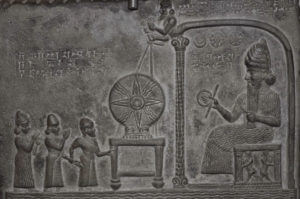

The pre-flood, or antediluvian, kings on the list reigned for tens of thousands of years, measured in units called sars, ners, and sosses, or 3600 years, 600 years, and 60 years respectively. In total, these eight antediluvian kings ruled for 241,200 years.
These, epochs measured in tens of thousands of years, are reminiscent of the Hindu Yugas, during which years of peace, chaos and everything in between are represented by cyclical ages lasting hundreds of thousands of years. The longest reign of the Sumerian King, En-men-lu-ana, lasted for 43,200 years, which is oddly similar to the Kali Yuga lasting 432,000. The number 432 is an auspicious number in mysticism and many ancient cultures, including the Vikings, Greek, and Mayans.
Some have speculated that these numbers are simply encoded in a formula
implanting the base-60 Sumerian mathematics system. If these many-millennia-long epochs are Pdivided by this formula one finds a more practical timeline. But when it comes to the list of postdiluvian kings with slightly less, but equally bizarre timelines, the formula doesn’t work.
After the flood, the list says the kingship descended from heaven in a new city called Kish, in what is now central Iraq. There, the postdiluvian kings reign for hundreds of years, i.e. Nangishlishma, who ruled for 670 years, and Zuqaqip, who ruled for 900 years. These supposed, multi-century lifespans reflect similar reports of men in the Old Testament, including multi-centenarians Enoch and Methuselah. Could there be a connection?
The postdiluvian list includes 23 kings who reigned for a total of 24,510 years, 3 months and 3 ½ days. After this period of rule, kingship was then moved to Eanna, followed by Uruk, Ur, and a subsequent series of back and forth movements throughout the area now known as Iraq. But as the list progresses, reigns get shorter with numbers that correspond with mortal life spans, save the occasional jumps back into several-hundred-year-long reigns.
Found in the Sumerian cuneiform tablets, the Ancient Sumerian Kings List suggests that humanity is over 266,000 years old, with rulers spanning over thousands of years. If these Annunaki Kings were human, is it possible we could also evolve to live extended lifespans?
Love and Regards,
Thank You,
Nancy Thames

